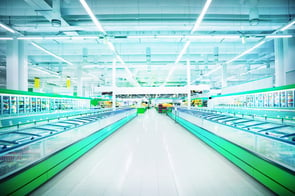 Lighting is an important factor in the creation of any pleasing retail shopping environment, and your pharmacy design will definitely benefit from learning how to properly use lighting to attract customers into your store and help to provide them with a pleasant shopping experience while they're there. A customer who has a warm, friendly feeling while visiting your pharmacy will naturally want to stay longer, meaning they'll probably spend more money and will be likely to come back again.
Lighting is an important factor in the creation of any pleasing retail shopping environment, and your pharmacy design will definitely benefit from learning how to properly use lighting to attract customers into your store and help to provide them with a pleasant shopping experience while they're there. A customer who has a warm, friendly feeling while visiting your pharmacy will naturally want to stay longer, meaning they'll probably spend more money and will be likely to come back again.
Your pharmacy design, including your specialized use of lighting, can help create the effect you're after. It's important to understand how to make the most out of the many lighting configurations and styles currently available to make your retail area as unique as you can for your customers and also a pleasing place for staff members to spend their working hours.
Here are some things to consider when working on your pharmacy lighting design project. For best results, it's not a bad idea to hire a qualified firm specializing in pharmacy design to take advantage of the experience they've gained in designing other successful pharmacy lighting design projects.
Factors to consider:
- Since the early 1900s, when fluorescent lighting was first introduced, it's grown to become ubiquitous for use in all types of retail environments as well as in offices, schools, hospitals and more. Their advantages include being cooler and more energy efficient than incandescent lights. Their disadvantages, however, are many. The light they produce is unnaturally sterile-looking, which may be fine for hospitals and clinics but not so attractive in a retail pharmacy setting. The tubes also contain mercury, which makes their disposal harmful to the environment when not done properly.
- LED (light emitting diode) lighting, which has recently become much more affordable due to vastly improved manufacturing techniques, is by far the most "green" form of illumination. It will save you money on your electric bill and also your maintenance costs since LEDs have an incredibly long operational lifespan. They produce very little heat, minimal infrared and nearly zero UV emissions. Their light is focused in a single direction, allowing it to be directed toward a specific area or location. They're also easily dimmable, allowing for the ability to create different moods in different sections of your store.
- The quality and amount of illumination utilized in your pharmacy can be used to make a statement that reinforces your brand identity. Light distribution should account for creating a sense of comfort for customers, fostering a feeling of well-being while purposefully highlighting featured displays and enhancing colors while avoiding glare. A successful lighting statement should start outside the main entrance in an effort to clearly display the desired store image. It should be focused on attracting potential customer attention and conveying the promise of a specific retail merchandising message, setting visitor expectations for a level of quality and a positive shopping experience.
- Once inside the store, customers should be greeted by a lighting arrangement that attractively promotes the merchandise, enhancing its appeal and helping motivate viewers to initiate purchases. Interior lighting goes hand-in-hand with pharmacy design, and a successful retail environment should, ideally, appeal to all the senses. Interestingly, it's estimated that as much as 80% of the sensory data received by shoppers comes through the eyes. Lighting has a direct influence on the visual mood created during a shopping experience.
Give some extra thought to lighting in your pharmacy design. Create the mood and style that speaks to your brand, and the rewards should be forthcoming.




